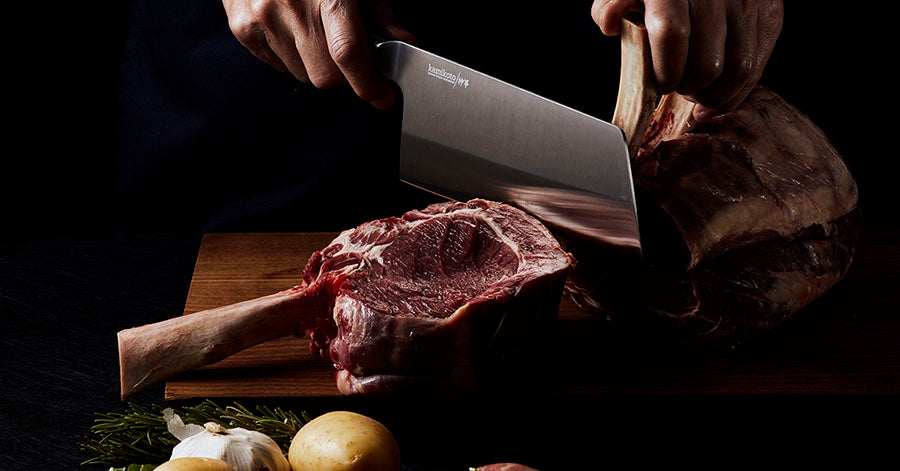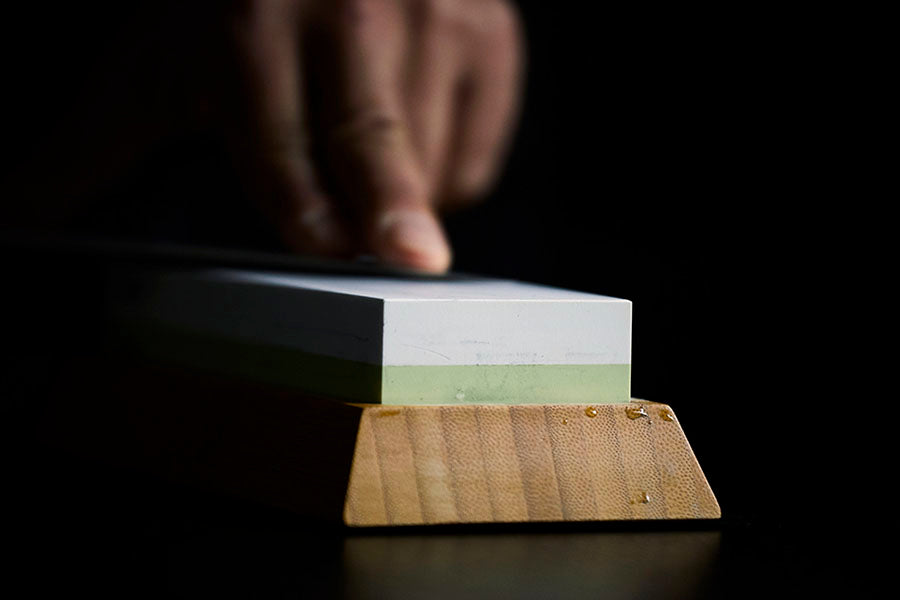
When it comes pounding, dicing, mincing, crushing and slicing, a chuka bocho is one of the most versatile and important tools in a chef’s arsenal.
What is a Chuka Bocho Cleaver?
The chuka bocho is a type of knife that is also commonly referred to as a Chinese cleaver or Chinese chef’s knife. However, it is not to be confused with a traditional butcher’s cleaver used to chop large bones. Instead, is a smaller shaped version of such a cleaver, featuring a wide blade with an elongated slender edge. It also has a shorter handle than traditional knives which - if used in the correct way - offers a secure and comfortable grip.
Many chefs consider the chuka bocho their ultimate ally in the kitchen for its sheer versatility. It truly is an all-purpose knife in every sense of the word as chefs can make a wide variety of cuts with it but also all components of the knife can be employed when cooking, not just the blade.
For instance:
- Sharp blade edge – makes all manner of cuts
- Butt of handle – can be used as a pestle to quickly pound spices, garlic & ginger
- Blunt edge of blade (top) – can be used to tenderize or lightly score meat
- Wide side of blade – can bruise & crush garlic or ginger, plus transfer foods from board to cooking vessel
When to Use a Chuka Bocho Cleaver
Using the correct knife to prepare dishes is imperative to the final outcome. The right knife and cut has a large impact not only during cooking, but in flavor and overall presentation. It is also important for the chef’s safety, for instance using a paring knife to slice a large melon would be disastrous.
A chuka bocho is primarily used when cutting vegetables and slicing boneless meat. Depending on the thickness and weight of the blade, it may also be suitable to chop small bones such as chicken wings. To determine suitability for this task, it is wise to refer to the manufacturer’s instructions.
Basic Cleaver Techniques

Understanding how to hold a knife is one of the first skills taught at culinary school. With a cleaver, there are two broad ways to grip with the cutting hand.
The first grip
Hold the cleaver handle close to the blade, placing the thumb on one side of the handle (where it meets the blade) and then curl the remaining fingers over the other side of the handle.
The second grip
Similar to the first, but grip is focused on the blade itself. Grip the handle of the knife where it meets the blade but place the thumb on one side of the blade and index finger on the other side. Ensure the main grip pressure is distributed between the thumb and index finger. This often a chef’s preferred grip as it gives them added control.
Some chefs opt to use the first grip for work that does not require an intricate finish ie chopping vegetables for a stock. For finer work, they revert to the second grip for greater control.
Using a Cleaver for Vegetables
As the chuka-bocho is mostly used to cut vegetables, there are many techniques one can develop from peeling to crushing to slicing and dicing. The following is a small selection but there are many others to practice to extend one’s cleaver-cutting repertoire.
Crush (garlic or ginger)
- Lay the flat, wide side of the knife over the food item, blade facing away.
- With the free hand, hit the top side of blade to crush the food item. Be sure to hit close to the blunt edge, not sharp.
Slicing and chopping
There are many different ways to chop and slice vegetables with a cleaver depending on the desired outcome – julienne, dice, rough chop etc.
In most, grip the cleaver using the second method as mentioned above and slice the vegetable in a smooth, downward motion, lifting the cleaver clear of the cutting board each time before making the next slice (this is quite different to the rocking technique used for other types of knives).
If it is more comfortable, use a gentle thrusting motion when slicing downwards. One can then proceed to cut the vegetable into the required shape using the same method.
Transferring
- Grip the cleaver handle and then rest the knife horizontally next to the chopped vegetables at a very slight angle.
- Slide the cleaver underneath the vegetables, using the free hand to help scoop them onto the wide part of the blade.
- Transfer them to the cooking vessel, using the free hand to anchor them on top to ensure they do not spill. Be careful not to place the free hand close to the sharp end of the cleaver blade.
Using a Cleaver for Meat and Fish
A chuka bocho cleaver works extremely well to chop, mince and tenderize boneless cuts of meat. It can also be used to quickly scale fish. However, it is not meant to be used to chop large bones as the blade edge is too fine and will likely chip or break. Use a large butcher’s cleaver instead.
Mince
There are two ways to mince with a cleaver. The choice of technique often comes down to comfort. In both methods, but sure to frequently collect the meat and resettle it into a pile to achieve an even mincing finish.
Rock mince
- Grip the cleaver using the same method as for vegetables.
- With the free hand, place two or three fingertips (or palm) on the top blunt part of the cleaver blade (this hand acts as a stabilizer for the knife when moving it to mince).
- Lift the cleaver, keeping the tip in contact with the board, and then bring it down, pivoting the blade constantly from one side to other and mincing the meat.
One-handed mincing
-
Grip the cleaver using the same method as for vegetables.
-
Lift the cleaver up from the board and then let it fall downwards onto the meat in a similar motion to letting an ax fall (but in a much gentler form).
-
Continue with this motion pivoting the blade from side to side until the meat is minced.
Slice
To butterfly or evenly slice meat, a horizontal cutting technique works well.
- Grip the cleaver with the cutting hand
- Angle the cleaver so it is facing horizontally to the cutting board and meat
- Rest the free hand flat on top of meat to stabilize it
- Keeping the cleaver horizontal, slice through the meat paying close attention to avoid cutting into the hand holding the meat
Tenderizing
- Grip the cleaver
- Hold it upside down
- Use the blunt edge of the blade to pound the meat in a crisscross pattern
Scale
- Grip the cleaver
- Hold the fish head with the free hand
- Run the sharp blade up and down the fish at a slight angle to descale
How to Sharpen a Cleaver
A sharp knife is a safe knife. Dulled knives are responsible for many more accidents due to the extra pressure exerted to produce a sharp cut. Therefore to remain safe, it is imperative the cleaver is keep sharp at all times.
There are a few schools of thought when it comes to the required sharpening angle for a chuka bocho. As a good quality chuka bocho should have quite a sharp edge to enable intricate work, the edge can be sharpened anywhere from 20 to 30 degrees. Generally speaking, the more chopping work performed – thus more pressure that is exerted on the knife – the higher the angle.
Chefs can select from a number of different sharpening techniques but the most effective is to use a whetstone.
Whetstone sharpening procedure

- After adequately soaking the whetstone, begin with the coarse side.
- Hold the knife at the selected angle and slide it across the stone in a smooth motion across the whole blade.
- Repeat this process a few times.
- Flip the cleaver and do the same.
- Next, turn the stone to the fine side and follow the same procedure.


